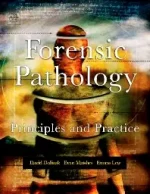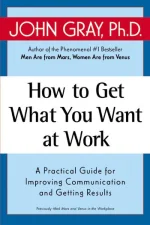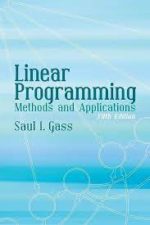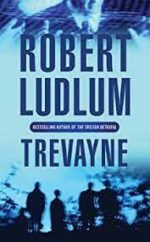-
Forensic Pathology Principles and Practice
KShs 60,000.00Forensic Pathology is a comprehensive reference that uses a case-oriented format to address, explain and guide the reader through the varied topics encountered by forensic pathologists. Developed in response to a severe void in the literature, the book addresses topics ranging from medicolegal investigation of death to death scene investigation, forensic autopsy, and artifacts of resuscitation as well as complications of medical therapy, forensic osteology, forensic odontology, forensic photography, and death certification. The book includes various types of cases, including sudden natural death, asphyxia, motor vehicle collisions, death in custody, child abuse and elder abuse, acute psychiatric and emotional deaths, and pregnancy. It contains sample descriptions of pathological lesions which serve to aid pathologists in reporting their findings to law enforcement agencies, attorneys, and others involved in investigations of sudden death. The concepts outlined in the text are beautifully illustrated by large, colorful photographs. There are also “Do and Don’t” sections at the end of each chapter that provide guidance for handling the types of cases examined. This work will benefit not only experienced forensic pathologists, but also hospital pathologists who occasionally performs medicolegal autopsies; doctors in training; medical examiners; law enforcement personnel; crime scene investigators; attorneys; and fellows and students of the medical sciences.
-
Think!: Before It’s Too Late
KShs 1,290.00The world is full of problems and conflicts. So why can we not solve them? According to Edward de Bono, current thinking cannot solve world problems because current thinking is itself the problem. And this is getting worse: we are so accustomed to readily available information online that we search immediately for the answers rather than thinking about them. Our minds function like trying to drive a car using only one wheel. There’s nothing wrong with that one wheel—conventional thinking—but we could all get a lot further if we used all four. De Bono examines why we think the way we do from a historical perspective and uses some of his famous thinking techniques combined with new ideas to show us how to change the way we think. If we strengthen our ability and raise our thinking level, other areas of our life—both personal and business success—will improve. De Bono is the master of the original big “concept” book and his enticement to us to use our minds as constructively as possible should appeal to a whole new generation of fans.
-
How to Get What You Want at Work-John Grey
KShs 3,275.00John Gray claims that by understanding the differences between men and women in the workplace anyone can identify and respond to various business approaches in a manner that earns greater respect and promotes increased cooperation. By recognizing how men and women interpret behaviors and reactions differently, a person can make more informed choices of how to make the best impression.
By showing the many ways men and women misunderstand and misinterpret each other in the workplace, John Gray offers practical advice on reducing unnecessary conflict and frustration. Filled with his trademark communications charts and practical advice on everyday office issues, How to Get What You Want at Work will enable readers to achieve their goals and to make the workplace a source of fulfillment.
-
In Praise of Savagery Paperback
KShs 1,000.00One man’s journey in the footsteps of a great explorer into the heart of Africa.
When he himself was a young man, Thesiger led an expedition to explore the course of the Awash river in Ethiopia. Every westerner that had gone before him had been killed by local tribesmen. Needless to say, he survived.
In Praise of Savagery is a highly original book that defies classification but is always effortlessly readable.
-
Linear Programming: Methods and Applications
KShs 2,100.00“One of the best introductory books on linear programming … excellent.” — Journal of the American Statistical Association.
“A good elementary text. ”— Mathematical Reviews.
Clear and comprehensive in its coverage of the entire spectrum of linear programming techniques, this volume introduces theoretical, computational, and applied concepts. Considerations of theoretical and computational methods include the general linear programming problem, the simplex computational procedure, the revised simplex method, the duality problems of linear programming, degeneracy procedures, parametric linear programming and sensitivity analysis, and additional computational techniques. The treatment of applications covers the transportation problem and general linear programming applications, and a final part examines nonlinear programming. Numerical examples and exercises with selected answers appear in every chapter.
Useful both as a text and as a reference, this volume provides valuable help to research analysts, applied mathematicians, economists, statisticians, and others wishing to make effective use of modern programming techniques. -
Trevayne
KShs 650.00Trevayne was a self-made millionaire by the time he was thirty. Then he went into government, carving out a brilliant and honourable career. Now he is head of one of the biggest foundations in the USA. Fearless, intelligent and incorruptible, he thought no one could touch him…Then his investigation into the ‘secret government’ led him beyond the corridors of official power into a nightmare maze where Mafia leaders and ‘legitimate’ billionaires mixed, where even the Presidency can be bought and sold. And where a man like Trevayne could be a dreaded enemy, a duped victim, or maybe, just maybe, a king.
-
-
The Secret Seven: Three Cheers, Secret Seven
KShs 695.00The Secret Seven are siblings Peter and Janet, and Jack, Barbara, Pam, Colin and George. Together they are The Secret Seven – ready to solve any mystery, any time – in Enid Blyton’s classic series of 15 mystery novels.In book eight, Peter and Jack go looking for their lost model aeroplane in an old abandoned house and find a lit fire in one of the rooms. Who is living there, and whyLooks like the Secret Seven have another interesting case to solve.First published in 1956, this edition features the original text and artwork.
-
Bruce & Borg’s Psychosocial Frames of Reference Theories, Models, and Approaches for Occupation-Based Practice-4th Edition
Psychosocial health is a fundamental element of all human health and well-being. Psychological, emotional, and social factors interact to influence peoples’ occupational lives, in turn influencing psychosocial health. Occupational therapists practicing in contemporary health and social sectors require the knowledge, attitudes and skills to identify and address these psychosocial factors.
The classic and renowned, Bruce & Borg’s Psychosocial Frames of Reference: Theories, Models, and Approaches for Occupation-Based Practice, Fourth Edition by Drs. Terry Krupa, Bonnie Kirsh, and their contributors, examines psychosocial models of practice and their application across a wide range of practice areas in occupational therapy, instead of being singularly focused on practice areas of the needs of people living with identified mental illnesses. Efforts have been made to highlight the relevance of specific models to practice for people with mental illnesses, particularly where the issues experienced by this group have historically been poorly addressed. The authors have also organized models and practice approaches according to the level at which they intervene to create change – occupation, person, environment, and transdisciplinary levels.
As their central domain of concern, the first group of occupational models or approaches have a focus on “what people do” in their daily lives. A second group of models reflect those that intervene at the level of the person. This group understands strengths and problems in occupation as evolving largely from features or qualities of the individual, and the therapeutic processes suggested are directed to changing or building upon these features. A third group of models and approaches focus on the psychosocial context and environment to elicit and enable a positive change in occupation. In some cases, these environmental models expand commonly-held, narrow definitions of “clinical” practice to encourage occupational therapists to engage in population-level practices. Finally, a small group of models of practice are labeled as transdisciplinary. Transdisciplinary models provide ways to develop conceptualizations of psychosocial practice issues, practice language, and approaches that are shared across disciplinary boundaries.
New in the completely updated Fourth Edition:
Contains models and practice approaches that are useful in enabling occupational therapists to address psychosocial concerns relevant to human occupation
Explores the psychological, emotional, and social experiences of humans carried out in context and their linkages to occupational engagement and well-being
Puts forward practice models that focus on person-level aspects of occupation in psychosocial practice
Examines transdisciplinary models and their relationship to psychosocial occupational therapy concepts and practices
Presents well established models and frameworks that focus on population and contextual level factors relevant to psychosocial occupational therapy practice
Discusses occupational therapy intervention approaches flowing from these models, relevant tools and practices, and, where available, the supporting evidence-base
Included with the text are online supplemental materials for faculty use in the classroom.With its updated models and a wide range of practice areas, Bruce & Borg’s Psychosocial Frames of Reference: Theories, Models, and Approaches for Occupation-Based Practice, Fourth Edition is the perfect resource for the occupational therapist student, faculty, and clinician or any practitioner in psychosocial and mental health.
-
Forensic Pathology Principles and Practice
KShs 60,000.00Forensic Pathology is a comprehensive reference that uses a case-oriented format to address, explain and guide the reader through the varied topics encountered by forensic pathologists. Developed in response to a severe void in the literature, the book addresses topics ranging from medicolegal investigation of death to death scene investigation, forensic autopsy, and artifacts of resuscitation as well as complications of medical therapy, forensic osteology, forensic odontology, forensic photography, and death certification. The book includes various types of cases, including sudden natural death, asphyxia, motor vehicle collisions, death in custody, child abuse and elder abuse, acute psychiatric and emotional deaths, and pregnancy. It contains sample descriptions of pathological lesions which serve to aid pathologists in reporting their findings to law enforcement agencies, attorneys, and others involved in investigations of sudden death. The concepts outlined in the text are beautifully illustrated by large, colorful photographs. There are also “Do and Don’t” sections at the end of each chapter that provide guidance for handling the types of cases examined. This work will benefit not only experienced forensic pathologists, but also hospital pathologists who occasionally performs medicolegal autopsies; doctors in training; medical examiners; law enforcement personnel; crime scene investigators; attorneys; and fellows and students of the medical sciences.









